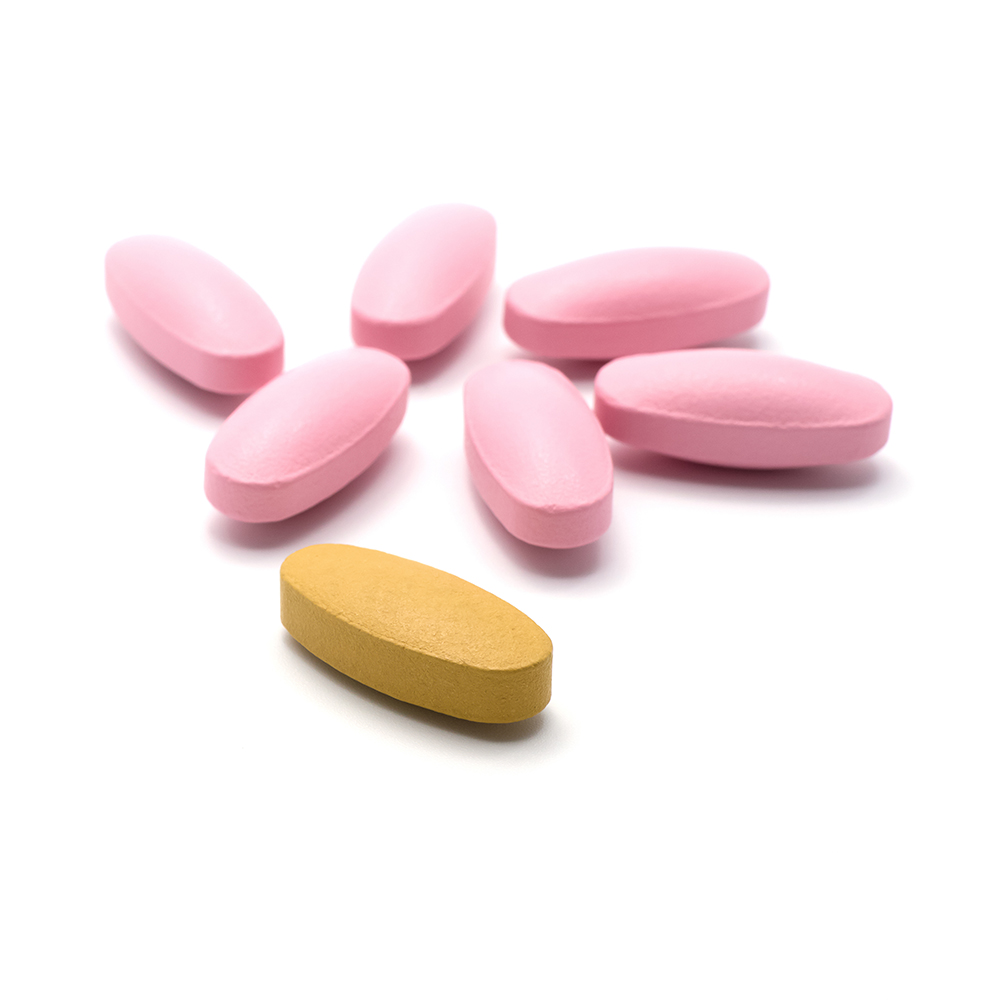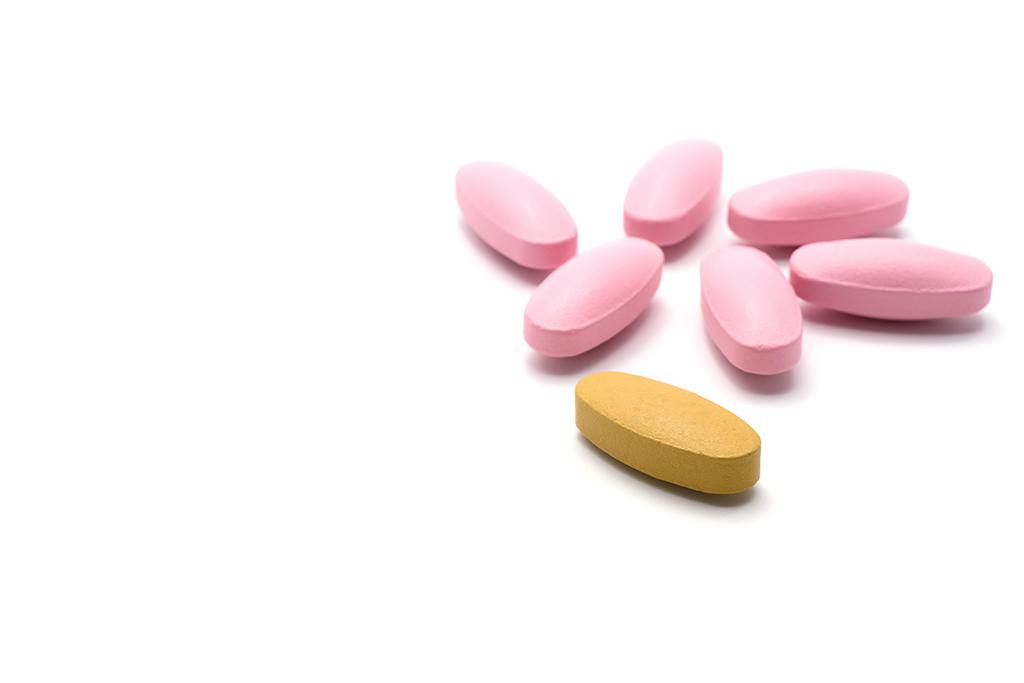

The Therapeutic Goods Administration (TGA) has issued a safety alert for tofacitinib following identification of an increased risk of pulmonary embolism and death in a post-marketing study. This safety signal was detected in a cohort of rheumatoid arthritis patients taking 10mg twice daily. These results have not been observed in other clinical trials or post-marketing data.
Tofacitinib is a Janus kinase inhibitor indicated for the treatment of rheumatoid arthritis, psoriatic arthritis, and ulcerative colitis. Tofacitinib is only approved at a dose of 5mg twice daily for the treatment of rheumatoid arthritis. However, higher doses are approved for treatment induction of ulcerative colitis.
Patients who were taking tofacitinib 10mg twice daily have transitioned to lower doses for the remainder of the study. The sponsor is continuing to work with the TGA to investigate this issue and will provide further details as they come to light. In the interim, healthcare professionals are reminded to follow the recommendations in the product information in relation to the specific condition for which tofacitinib is prescribed. Patients should be advised to seek urgent medical attention if they experience symptoms such as:
- Sudden shortness of breath or difficulty breathing;
- Pain in the chest or back;
- Coughing up blood;
- Excessive sweating; or
- Clammy/bluish coloured
Healthcare professionals and patients are encouraged to report any adverse events or side effects associated with the use of tofacitinib to the TGA.


Around 63% of Australian adults are overweight or obese, significantly increasing their risk of disease such as cardiovascular disease, type 2 diabetes, and some cancers. Contrave® is a new medication for weight management as an adjunct to diet and exercise. It is indicated for adults who are obese and adults who are overweight and have at least one weight-related comorbidity. Contrave® contains the opioid antagonist, naltrexone, in combination with the dopamine and noradrenaline reuptake inhibitor, bupropion.
A randomised, double-blind, placebo-controlled trial demonstrates the efficacy of this combination therapy. Weight loss of at least 5% was achieved in 31% of participants taking bupropion with naltrexone compared to 12% in the placebo group. Weight loss of at least 10% and 15% was observed in 17% and 9% of the treatment group respectively (5% and 2% for placebo). Significant improvements were also observed in waist circumference, insulin resistance, and lipid levels.
In clinical trials, twice as many people discontinued Contrave® therapy due to adverse events compared to placebo. The most commonly reported reactions leading to discontinuation were nausea, headache, dizziness, and vomiting. As bupropion is associated with a dose-related risk of seizures, Contrave® is contraindicated in patients with a history of seizures. Caution should also be exercised in patients with risk factors for seizures such as a history of head trauma, excessive alcohol use, use of medications that may induce hypoglycaemia, and concomitant use of drugs that may lower the seizure threshold.


Carbimazole is an anti-thyroid medication indicated for the treatment of hyperthyroidism. Two safety issues have recently been highlighted following a review by the European Medicines Agency (EMA):
- Risk of pancreatitis; and
- The importance of contraceptive measures.
Post-marketing surveillance reveals an association between acute pancreatitis and carbimazole therapy. Although the mechanism for this effect is poorly understood, it is thought to have an immunological basis. If acute pancreatitis occurs, carbimazole should be discontinued immediately and not restarted. Re-exposure may result in life-threatening acute pancreatitis with a reduced time to onset.
Pancreatitis may present with fever, nausea, vomiting, and abdominal pain that is usually central and epigastric; plasma lipase levels are often at least three times greater than the reference range. While a number of case reports have been published on this issue, only one report of pancreatitis with carbimazole can be found in the almost 50 years of data available on the Australian Database of Adverse Event Notifications. It is also worth noting that carbimazole was not the only medication suspected of causing the adverse event in this case.
Available data now also strengthens the evidence that carbimazole can cause congenital malformations when administered during pregnancy. Reported malformations include aplasia cutis congenita, craniofacial malformations, exomphalos, oesophageal atresia, omphalo-mesenteric duct anomaly, and ventricular septal defect. The risk appears to be greatest during the first trimester and when high doses are used. It is, therefore, recommended that women of childbearing potential use effective contraceptive measures while undertaking therapy with carbimazole.
Studies also demonstrate that the risk of congenital malformations is greater when maternal hyperthyroidism remains untreated. Carbimazole should only be used during pregnancy after a careful individual risk/benefit assessment. If carbimazole is deemed appropriate, the lowest effective dose should be prescribed without additional administration of thyroid hormones. Close maternal, foetal, and neonatal monitoring is recommended.
The manufacturer has advised that the product information for carbimazole will be updated to reflect these safety issues.


An updated version of the Uniform Recall Procedure for Therapeutic Goods (URPTG) has been introduced by the Therapeutic Goods Administration (TGA). Major changes to the URPTG that are now in effect include:
- The introduction of two new recall actions; and
- Product defect correction. This term replaces ‘recall for product correction’ and is undertaken to correct a specific or potential deficiency. In some cases, the therapeutic good can continue to be used until a permanent correction is implemented. For example, pharmacies may be asked to replace plain bottle closures with child-resistant caps while awaiting the supply of new stock with the appropriate closure.
- Product defect alert. This is used to raise awareness of concerns regarding safety, quality, or performance while describing actions that may be taken to mitigate risks. This type of alert may be issued when discontinuation of treatment is considered a greater risk than continued use of the affected product. It is generally reserved for critical therapeutic goods that do not have an alternative and for which a recall action would result in a medicine shortage or interruption of patient treatment. A product defect alert may be followed by a recall once unaffected or alternative products become available.
- Introduction of one new type of non-recall action.
- A quarantine may be initiated when a defect is identified in released goods that has the potential to result in safety, efficacy, or performance issues. This suspends further supply and distribution of the goods while investigations are conducted, the results of which determine any further action that will be taken.
Further information on the other categories of recall and non-recall actions can be found at the TGA. HPS Pharmacies will continue to provide timely advice on drug recalls, safety, and supply issues via DrugAlert communications.


Promethazine is a phenothiazine derivative with potent antihistaminic and sedative-hypnotic effects. The injectable form is currently registered for the treatment of uncomplicated allergic conditions of the immediate type; treatment and prevention of motion sickness, drug-induced nausea, post-operative nausea and vomiting; and as a sedative for pre-operative, post-operative, and obstetric use.
However, the Institute for Safe Medication Practices (ISMP) recommend that injectable promethazine no longer be used in hospitals. Promethazine is a known vesicant that can cause severe tissue injury if perivascular extravasation or unintentional intra-arterial injection occurs. Potential sequelae include thrombophlebitis, venous thrombosis, paralysis, abscess, tissue necrosis, and gangrene. Surgical intervention, including fasciotomy, skin grafts, and amputation, have been required in some cases.
To limit the risk of these events, deep intramuscular injection is the preferred parenteral route of administration for promethazine; intra-arterial and subcutaneous use is contraindicated. However, there are many safer therapeutic alternatives that should be considered. For example, a 5HT3 antagonist such as granisetron, ondansetron, palonosetron, or tropisetron may be an appropriate alternative for nausea and vomiting.
If intravenous promethazine is considered appropriate, the following points should be considered:
- Dilute the contents of the ampoule to reduce the vesicant effects;
- Limit the dose;
- Administer slowly;
- Use only large patent veins (preferably via a central venous access site, avoid hand or wrist veins); and
- Discontinue injection immediately if the patient complains of burning or pain.


A new contraindication has been added to the product information of Doryx® (doxycycline). This product is now contraindicated with the concurrent use of methoxyflurane due to reports of fatal renal toxicity when methoxyflurane is co-administered with tetracycline.
Doxycycline is a tetracycline antibiotic indicated for a number of conditions including community-acquired pneumonia, acute bacterial sinusitis, chronic prostatitis, pelvic inflammatory disease, and acne. Methoxyflurane is an inhalational anaesthetic that can cause renal failure on its own when administered at high doses. However, it is now only used in subanaesthetic doses for rapid-onset short-term analgesia. While this medication may be administered in a monitored setting for analgesia during surgical procedures, it is also carried by defence force personnel, surf lifesaving departments, and other emergency services in the form of the Penthrox® ‘green whistle.’ Methoxyflurane is, therefore, often administered in situations where a full medical history may not be readily available.
While the mechanism of this interaction is not fully understood, it is thought to be a class effect. Therefore, caution is recommended with other brands of doxycycline, minocycline, and tetracycline (not currently marketed in Australia). There is also the possibility that methoxyflurane may enhance the nephrotoxic potential of other agents such as gentamicin, colistin, and amphotericin B.
The Database of Adverse Event Notifications managed by the Therapeutic Goods Administration has received only two reports of renal failure associated with the use of methoxyflurane since 1971. While neither of these cases was fatal, methoxyflurane-associated renal failure is generally irreversible. Careful attention to the contraindications, precautions, and dosing instructions listed in the Penthrox® product information is advised.


Ertugliflozin is the latest sodium-glucose co-transporter-2 (SGLT-2) inhibitor available in Australia. This medication helps to regulate blood glucose levels in type 2 diabetes by increasing urinary glucose excretion.
The following products containing ertugliflozin were added to the Pharmaceutical Benefits Scheme (PBS) on the 1st December 2018:
- Ertugliflozin (Steglatro®);
- Ertugliflozin + metformin (Segluromet®); and
- Ertugliflozin + sitagliptin (Steglujan®).
A randomised study assessing the safety and efficacy of ertugliflozin in patients with type 2 diabetes demonstrated significant improvements in glycaemic control at week 26. Patients receiving 5mg or 15mg ertugliflozin as monotherapy achieved a reduction in HbA1c (%) of 0.79 and 0.96 respectively, compared to an increase of 0.20 in the placebo group. Ertugliflozin is not PBS approved for monotherapy.
One of the most common adverse effects reported with ertugliflozin therapy are fungal infections of the genital tract. Ketoacidosis, including life-threatening cases, has been identified in patients taking other SGLT-2 inhibitors. Factors that may predispose a patient to ketoacidosis include insulin dose reduction, acute febrile illness, reduced caloric intake, and alcohol abuse. Like other medicines in this class, consideration may be given to withholding ertugliflozin in situations that increase the risk of ketoacidosis such as fasting prior to surgery.


While patients undergoing anaesthesia in Australia continue to enjoy good clinical outcomes, anaesthesia-related anaphylaxis remains a significant cause of morbidity and mortality. Neuromuscular blocking agents (NMBAs) are the most commonly implicated drug class, involved in 62% of reported IgE-mediated anaphylaxis events during anaesthesia. However, up to 50% of these cases occur upon initial exposure to an NMBA. There is also marked geographical variation in the rate of these events, suggesting that an alternative agent may be inducing sensitisation.
The quaternary ammonium ion is the allergenic portion of an NMBA. This chemical group can also be found in a number of medications and household chemicals. Epidemiological studies suggest that pholcodine, in particular, may be a significant contributor to NMBA sensitisation.
Pholcodine is a cough suppressant that can be found in numerous cough liquids and cough lozenges. This medication can induce production of IgE antibodies specific for the quaternary ammonium ion. While antibody titres fall within two years of pholcodine use, re-exposure can result in dramatic increases in levels. There are often no obvious clinical signs that sensitisation has occurred, making it unlikely to be detected unless serological assays are performed. However, the presence of these antibodies may increase the risk of anaphylaxis up to 300-fold.
While a causal link between the use of pholcodine and NMBA-related anaphylaxis has not been proven, the following points may warrant consideration:
- While rare, the mortality rate for NMBA-related anaphylaxis is significant at around 4%, an additional 2% of patients suffer long-term brain injury;
- The rate of NMBA-related anaphylaxis has reduced in countries following the withdrawal of pholcodine from the market;
- Evidence supporting the efficacy of pholcodine is limited; and
- Therapeutic alternatives exist.
















